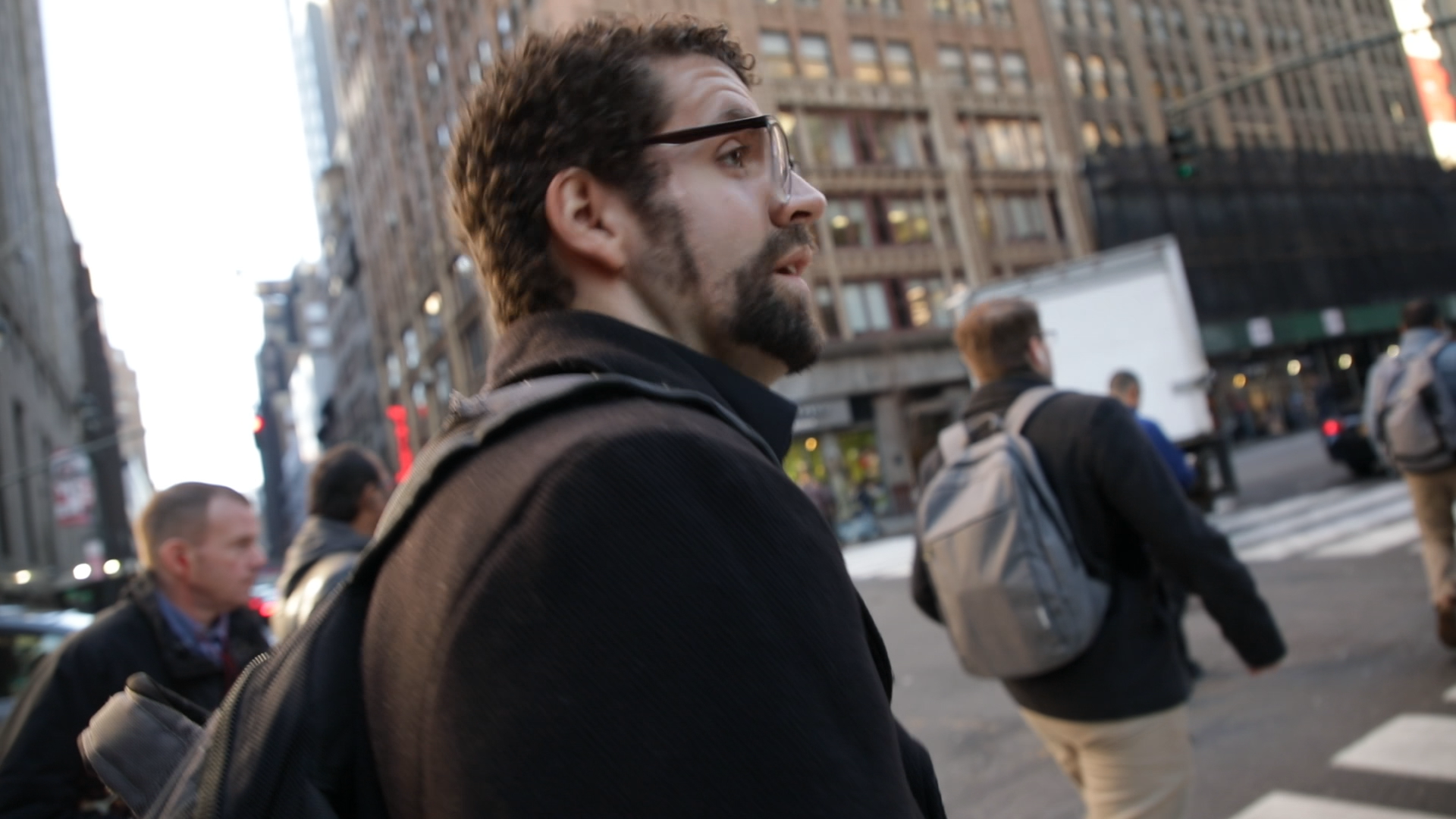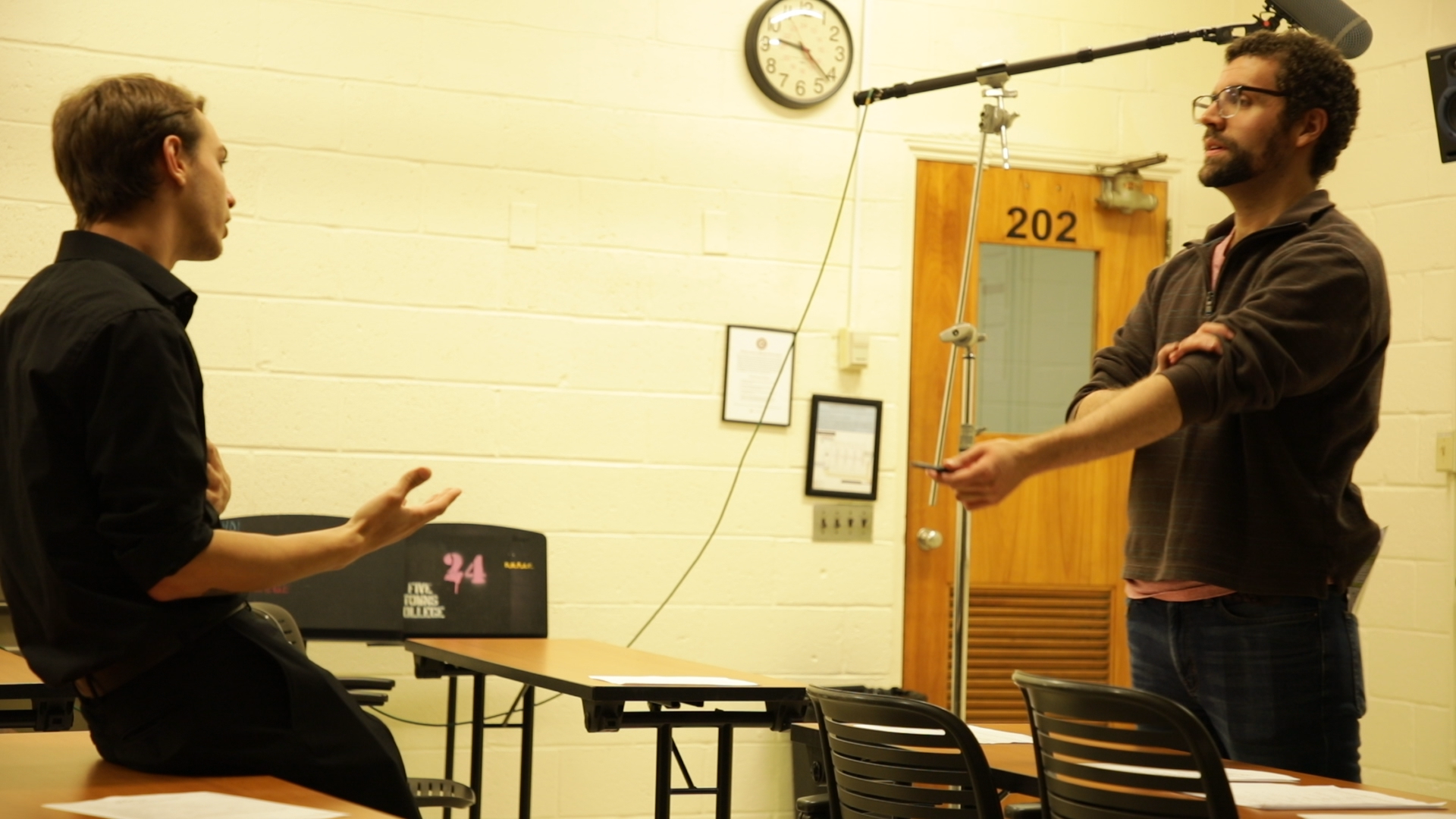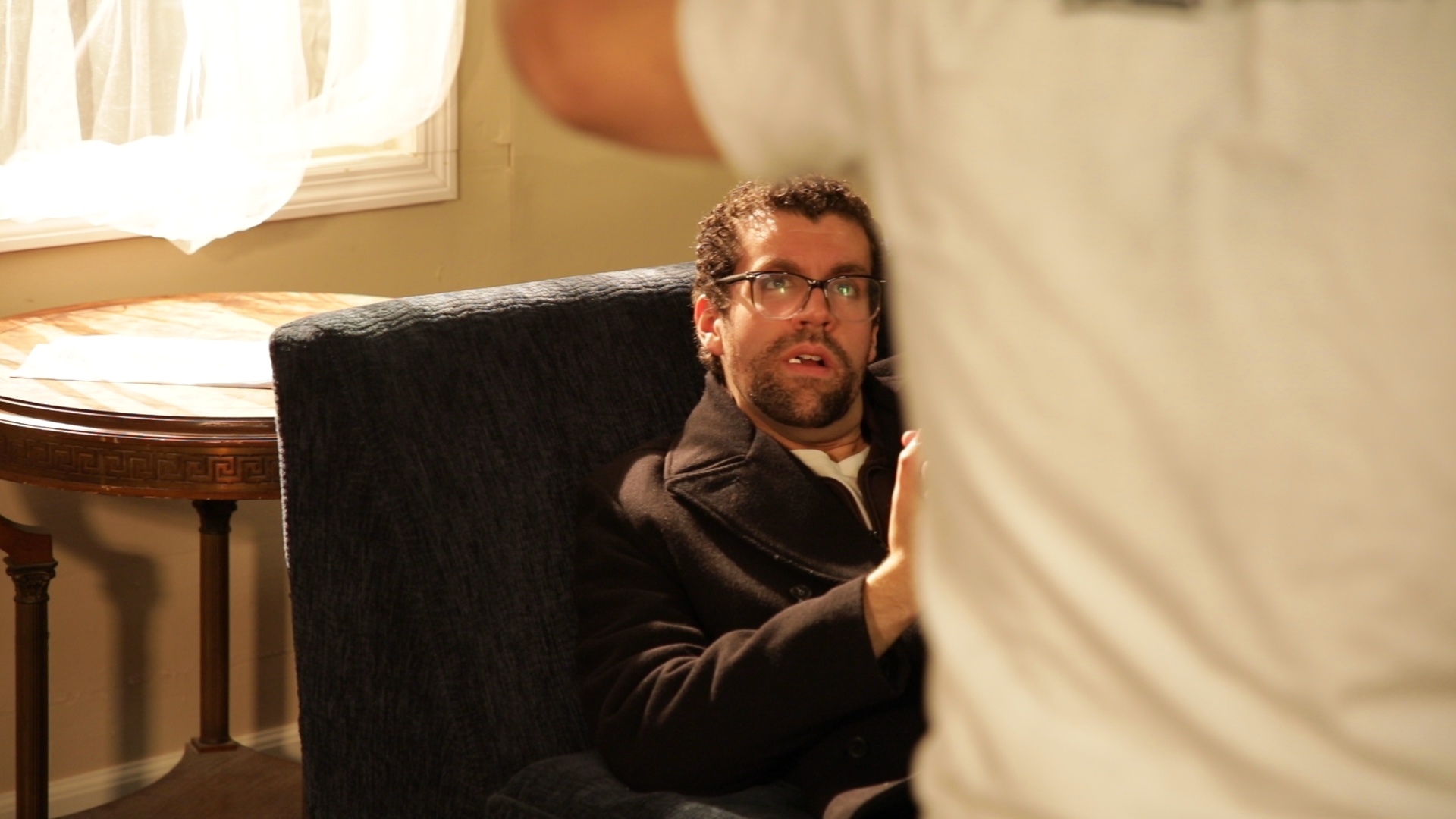The Actor’s Journey

Peter Tarantino (Photo: Alessandro Imperiale)
by Alessandro Imperiale
Many actors experience difficulty finding consistent employment or security in their passion. In the hopes of better understanding what some actors do in the pursuit of achievement, I followed Five Towns College alum and actor, Peter Tarantino, for several weeks to bear witness to the tribulations and triumphs of professional acting.
At first, diving into the mind of a stage performer can be jarring, even uncanny, as you see people take on the lives and personalities of people that existed on paper only a moment ago. When I asked Tarantino what makes him so capable of taking on this task, he responded, “You start to see how universal those little moments that maybe you always thought were insignificant become huge. That is the stuff that plays are made of.” However, that’s not all. Vigorous warm-ups, including stretching, vocal exercises, and mental tests, are all part of the daily routine of an actor on set to get into the proper mindset for a performance.
According to the Bureau of Labor Statistics, there were almost 50,000 registered actors in the United States in 2018. Yet, that number isn’t accounting for actors who aren’t in the union; people such as Tarantino. See, it is important to understand that most actors seen in major productions are either a part of the Actor’s Equity Association or SAG-AFTRA, which when going to auditions, is critical if you even want a chance at being seen.

(Photo: Alessandro Imperiale)
When a production is casted, the way it works is that all Equity actors get first choice online to choose a slot of time to audition in banks of ten people. Then after that, any actor who didn’t register but is Equity, can walk in the door and sign up for whatever slots are available. After all this, if there is time left over, the non-union actors wait in the lobby to be told whether or not they will be seen at all. I accompanied Peter into the city on several occasions to Pearl Studio, where he would constantly audition. Still, time and time again, he would wait for hours before the judges decided they were done, and the clerk told him to go home.
According to Producer/Screenwriter, Ken Miyamoto, the difficulties that actor face do not stop in the casting room, “These people are as human as the next, so like all of us “little people,” they have rough patches in life. Depression, substance abuse, death of loved ones, disease, poor self-esteem. But they also have an added level that we “little people” can’t fathom. Living in the public eye. Those above rough patches in life, for which we normally live through within the context of only our inner circles, are showcased for billions of people to see. They are plastered on the covers of magazines, TMZ, YouTube, etc. They are judged by whatever portrayal of such rough patches are written, often by people with hidden agendas and no true knowledge of the truth.”

(Photo: Alessandro Imperiale)
So, with all this information, at face value it almost seems like the obvious answer is to stay away from this line of work, yet so many don’t; people like Peter Tarantino. He constantly strives to perform on the stage. When asked what drives him through this difficult process, he responded “I just want to tell a good story, that’s really it, you know? I can’t see myself anywhere else than here.”
And the same is true for so many others. In Backstage, Anthony Miendl says, “You have to start doing it for you. Find the reasons why you wanted to do it in the beginning. To create. To express. To have fun. To be human. To actually discover yourself. Those are the real reasons we’re doing it, and we’re not even aware of it. We’re not even aware of the deeper forces at play within ourselves that compel us to make art. To tell stories. To feel. To emote. To risk. To share. To live life courageously and vulnerably as an artist.”





